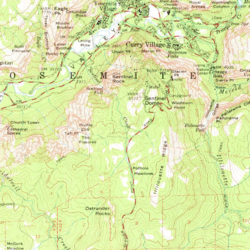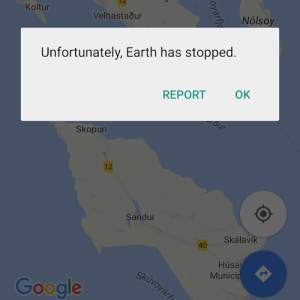1.6 Converting Rates
Applications
If you know you can hike over steep terrain at about an 18-minute mile, how long will it take you to get from your vehicle to your sampling plot 800 yards away? This is the sort of everyday calculation that lets us plan for a workday in the field. Being comfortable with this everyday math (as well as more complex applications of rates), will ready you for work in this field.


You probably know all of the necessary conversions for time: 60 seconds in a minute, 24 hours in a day, etc.
When we get to units of time larger than weeks, however, we encounter problems because not all months have the same number of days, a year is not exactly 52 weeks, and the time it takes for the Earth to orbit the Sun is not exactly 365 days. Therefore, it doesn't make sense to expect an exact answer to a question like "how many minutes are in one month?" We will have to use our best judgment in situations such as these.
[latex]1[/latex] min = [latex]60[/latex] sec
[latex]1[/latex] hr = [latex]60[/latex] min
[latex]1[/latex] day (dy) = [latex]24[/latex] hr
[latex]1[/latex] week (wk) = [latex]7[/latex] dy
[latex]1[/latex] year (yr) = [latex]365[/latex] dy
Examples: Time
Practice Exercises
- How many minutes is one standard [latex]365[/latex]-day year?
- Have you been alive for one billion seconds? Is this even possible?
A rate is a any unit of measurement that includes time as a component. For example, miles per hour (mph) is a unit that describes distance per unit of time (or velocity) and cubic feet per second (cfs) is a rate that describes volume over time. You may also find rates in applied problems that are unique to that problem. For example we may know that an experienced tree planter can plant 3,000 seedlings per day, or that a Brown Bear (Ursus arctos) gains six pounds per day while preparing for hibernation.
Hint: Look for the word PER in applied problems. In general, this word denotes a rate.
Previously, we began with units in the numerator only. If we need to convert a rate, however, we'll begin with units in both the numerator and denominator. You can cancel the units from the numerator to the denominator - or from the denominator to the numerator.
Examples: Simple Rates
Practice Exercises
Usain Bolt holds the world record time for the [latex]100[/latex]-meter dash, [latex]9.58[/latex] seconds.
- What was his average speed in kilometers per hour?
- What was his average speed in miles per hour?
The more information we know, the more things we can figure out. Look for unit prices, the word "per", and other embedded conversion factors in word problems.
Hint: The first factor in your set up, should NOT be a conversion factor. Start with a number in the problem that isn't a unit price and doesn't include the word "per",
Examples: Converting to Find "Maynythings"
A) If I hike at a rate of 3 miles per hour. How many minutes will it take me to hike 4 kilometers?
B) If you know you can hike over steep terrain at about an 18-minute mile, how long will it take you to get from your vehicle to your sampling plot 800 yards away?
C) A wildlife technician can complete 3 habitat plots per hour. If she has 200 plots to record, how many 8-hour days will the work require?
D) The City of Coeur d' Alene uses 7 million gallons of water per day during winter and 35 million gallons per day during the peak of summer. How many cubic feet per second is this? How many gallons per minute do pumps need to provide during the peak of summer?
Practice Exercises

An F-[latex]15[/latex] fighter jet can reach a sustained top speed of roughly Mach [latex]2.3[/latex]; this is [latex]2.3[/latex] times the speed of sound, which is [latex]770[/latex] miles per hour.[1]
- What is the jet's top speed in miles per hour?
- At this speed, how many miles would the jet travel in one minute?
- The jet's range at this speed before it runs out of fuel is around [latex]600[/latex] miles. If the jet flies [latex]600[/latex] miles at top speed, for how many minutes will it fly?
- The jet's maximum fuel capacity is [latex]3,475[/latex] gallons. If the jet flies [latex]600[/latex] miles and burns [latex]3,475[/latex] gallons of fuel, find the jet’s fuel efficiency, in miles per gallon.
- Rewrite the jet’s fuel efficiency, in gallons per mile.
- How many gallons of fuel does the jet consume in one minute?
Problem Set 1.6
- Convert 25 miles per hour to kilometers per hour.
- Convert 60 kilometers per hour to miles per hour.
- Convert 55 miles per hour to meters per hour.
- Convert 55 miles per hour to inches per second.
- Convert 8,000 feet per hour to miles per minute.
- Convert 85 gallons per second to cubic feet per second.
- Convert 500 gallons per minute to cubic feet per second.
- Convert 3 cubic meters per second to cubic feet per second.
- Convert 1000 gallons per minute to cubic feet per second.
- Spokane uses 1,200,000 gallons of water/day. How many gallons per minute must be pumped from the aquifer to supply the city?
- My sources for the following set of questions are a combination of former students in the Air National Guard and people who sound like they know what they're talking about on the internet, particularly in this Quora discussion. ↵

